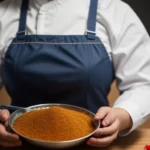From Tapas to Paella: The Best of Spanish Culinary Delights
Introduction: A Culinary Journey Through Spain
Spain is a country known for its rich culinary traditions, diverse regional cuisines, and vibrant dining culture. From tapas to paella, Spanish cuisine is loved and celebrated around the world for its bold flavors, fresh ingredients, and colorful presentation. Join us as we take a culinary journey through Spain and explore some of the best dishes the country has to offer.
1. Tapas: Small Bites of Flavor
Tapas are perhaps the most iconic culinary tradition in Spain. These small, flavorful dishes are meant to be shared among friends and family, and are often enjoyed as a prelude to a larger meal. From classic options like olives, cheese, and cured meats to more elaborate dishes like croquettes, patatas bravas, and grilled octopus, tapas offer a wide range of flavors and textures that showcase the best of Spanish cuisine.
2. Paella: A Taste of Valencia
Paella is another quintessential Spanish dish that has gained international fame. Originating from the region of Valencia, paella is a rice-based dish cooked with a variety of ingredients like seafood, chicken, rabbit, and vegetables. The key to a great paella is the socarrat, a crispy layer of rice that forms at the bottom of the pan. Whether you prefer a traditional paella Valenciana or a modern twist with added ingredients like chorizo or squid ink, paella is sure to satisfy your taste buds.
3. Pulpo a la Gallega: Galician Octopus
Pulpo a la Gallega, or Galician-style octopus, is a popular dish from the region of Galicia in northwestern Spain. The octopus is cooked until tender, then sliced and served with paprika, olive oil, and coarse sea salt. This simple yet flavorful dish is a true delicacy that highlights the fresh seafood that Spain is known for.
4. Gazpacho: The Taste of Summer
Gazpacho is a cold, refreshing soup made from ripe tomatoes, peppers, cucumbers, onions, garlic, and olive oil. This iconic Spanish dish is perfect for hot summer days and is a great way to enjoy the bounty of fresh produce that Spain has to offer. Gazpacho is often served with bread or croutons on the side for a satisfying and healthy meal.
5. Tortilla Espanola: The Spanish Omelette
Tortilla Espanola, or Spanish omelette, is a simple yet delicious dish made with eggs, potatoes, and onions. This humble dish is a staple in Spanish homes and can be enjoyed for breakfast, lunch, or dinner. The key to a great tortilla Espanola is to cook it slowly and patiently until the eggs are set and the potatoes are tender. Serve it warm or at room temperature with a side salad for a satisfying meal.
6. Churros con Chocolate: Sweet Treats
Churros con chocolate are a beloved Spanish dessert that can be enjoyed any time of day. These crispy, fried dough sticks are dusted with sugar and cinnamon, then dipped in a thick, rich chocolate sauce. Whether you prefer them for breakfast with a cup of hot chocolate or as a late-night snack after a night out, churros con chocolate are a sweet treat that is sure to satisfy your sweet tooth.

7. Jamon Iberico: The King of Spanish Cured Meats
Jamon Iberico, or Iberian ham, is a premium cured meat made from acorn-fed pigs in Spain. This prized delicacy is known for its rich flavor, smooth texture, and distinctive marbling. Jamon Iberico can be enjoyed on its own or as part of a charcuterie board with other cured meats, cheeses, and olives. The taste of jamon Iberico is truly unforgettable and is a must-try for any food lover visiting Spain.
8. Crema Catalana: The Spanish Creme Brulee
Crema Catalana is a creamy, custard-like dessert that is similar to creme brulee. This Catalan specialty is made with milk, sugar, egg yolks, and a hint of citrus zest, then topped with a crunchy caramelized sugar crust. Crema Catalana is often flavored with cinnamon, vanilla, or licorice for a unique and delicious twist. Enjoy it as a sweet ending to a meal or as a decadent treat on its own.
9. Pisto Manchego: Spanish Ratatouille
Pisto Manchego is a traditional Spanish dish similar to ratatouille, made with sautéed vegetables like tomatoes, peppers, zucchini, and onions. This hearty and flavorful dish is often served as a side or main course and can be enjoyed hot or cold. Pisto Manchego is a great way to showcase the abundance of fresh produce that Spain has to offer and is a healthy and satisfying meal option.
10. Fabada Asturiana: Hearty Spanish Stew
Fabada Asturiana is a hearty Spanish stew from the region of Asturias, made with white beans, chorizo, morcilla (blood sausage), and pork belly. This comforting dish is slow-cooked until the flavors meld together and the meat becomes tender. Fabada Asturiana is often enjoyed on cold winter days and is best served with crusty bread and a glass of red wine for a truly satisfying meal.
11. Patatas a la Riojana: Potatoes in Rioja Style
Patatas a la Riojana is a flavorful Spanish dish made with potatoes, chorizo, and peppers cooked in a spicy tomato sauce. This hearty and comforting dish is perfect for a weeknight dinner or a casual gathering with friends and family. Patatas a la Riojana is often served with crusty bread or rice for a complete meal that is sure to warm you up on a cold day.
12. Bacalao al Pil Pil: Basque Cod in Garlic Sauce
Bacalao al Pil Pil is a classic Basque dish made with cod cooked in a garlic and olive oil sauce until it emulsifies into a rich and creamy sauce. This flavorful dish is often served with crusty bread for dipping and is a great way to enjoy the fresh seafood that the Basque region is known for. Bacalao al Pil Pil is a must-try for any seafood lover visiting Spain.
13. Arroz Negro: Black Rice with Squid Ink
Arroz Negro, or black rice, is a traditional Spanish dish made with rice cooked in squid ink, then mixed with seafood like squid, shrimp, and mussels. This unique dish has a striking black color and a savory, briny flavor that is truly distinctive. Arroz Negro is often served with aioli or lemon wedges for added flavor and is a delicious way to experience the flavors of the Mediterranean.
14. Pimientos de Padron: Spicy Spanish Peppers
Pimientos de Padron are small green peppers from the region of Padron in Galicia that are fried in olive oil and sprinkled with coarse sea salt. These peppers are mild in flavor, but every once in a while, you may come across a spicy one that packs a punch. Pimientos de Padron are a popular tapas dish in Spain and are a great way to enjoy the simple yet delicious flavors of fresh produce.
15. Conclusion: A Culinary Adventure in Spain
From tapas to paella, Spanish cuisine offers a wide range of flavors and textures that showcase the best of the country’s culinary traditions. Whether you’re enjoying a casual meal with friends at a local tapas bar or savoring a fine dining experience at a Michelin-starred restaurant, the diverse regional cuisines of Spain are sure to delight your taste buds and leave you craving more. So next time you find yourself in Spain, be sure to explore the country’s delicious culinary delights and immerse yourself in the vibrant dining culture that makes Spain a food lover’s paradise. ¡Buen provecho!
FAQs about “From Tapas to Paella: The Best of Spanish Culinary Delights”
- What makes “From Tapas to Paella: The Best of Spanish Culinary Delights” a must-read for food enthusiasts? This book offers a delectable journey through the vibrant flavors and diverse culinary traditions of Spain, showcasing iconic dishes like tapas and paella. It’s a comprehensive guide for anyone eager to explore the richness of Spanish cuisine.
- Which Spanish culinary delights are featured in this book? “From Tapas to Paella” features a wide array of Spanish dishes, including tapas such as patatas bravas and croquetas, as well as iconic mains like paella, gazpacho, and Spanish omelette. Each dish is presented with detailed instructions and cultural insights.
- How does this book capture the essence of Spanish culinary culture? This book captures the essence of Spanish culinary culture by celebrating the country’s rich gastronomic heritage, emphasizing the importance of fresh, quality ingredients and the conviviality of sharing food with friends and family.
- Are the recipes in “From Tapas to Paella” suitable for home cooks of all skill levels? Yes, “From Tapas to Paella” caters to cooks of all skill levels, offering recipes that range from beginner-friendly to more advanced. Whether you’re new to Spanish cooking or a seasoned chef, you’ll find recipes that inspire and delight.
- Can readers expect to learn about the regional diversity of Spanish cuisine in this book? Absolutely! “From Tapas to Paella” explores the regional diversity of Spanish cuisine, highlighting dishes and culinary traditions from various regions such as Andalusia, Catalonia, the Basque Country, and more. Readers will discover the unique flavors and ingredients that characterize each region’s cuisine.
Advantages:
- Appetizing language: The title “From Tapas to Paella: The Best of Spanish Culinary Delights” uses descriptive terms to evoke the richness and variety of Spanish cuisine, immediately capturing the reader’s interest.
- Culinary exploration: The title promises readers a journey through the diverse offerings of Spanish cuisine, showcasing iconic dishes like tapas and paella, providing them with a comprehensive overview of Spanish culinary traditions.
- Cultural immersion: By highlighting the best of Spanish culinary delights, the title offers readers insights into the cultural, regional, and historical influences that shape Spanish cooking, fostering a deeper appreciation for Spanish culture.
- Practicality: By focusing on Spanish cuisine, the title appeals to readers interested in exploring authentic and delicious Spanish dishes, providing them with recipes, tips, and techniques to recreate the flavors of Spain in their own kitchens.
- Inspiration for dining: The title may inspire readers to seek out Spanish dishes at restaurants or attempt to cook them at home, encouraging culinary exploration and appreciation of Spanish cuisine.
Disadvantages:
- Lack of specificity: While tapas and paella are mentioned, the title does not specify which other dishes will be explored or which regions of Spain will be covered, leaving readers uncertain about the scope of the content.
- Potential oversimplification: Focusing solely on tapas and paella may oversimplify the richness and diversity of Spanish culinary traditions, overlooking lesser-known but equally delicious dishes and regional specialties.
- Accessibility of ingredients: Some Spanish dishes may require specific ingredients that are difficult to find outside of Spain or major culinary hubs, limiting the practicality of the recipes for some readers.
- Dietary restrictions: Spanish cuisine often includes ingredients like cured meats, cheese, and seafood, which may not be suitable for individuals with dietary restrictions or preferences, potentially alienating some readers.
- Cultural appropriation: Without proper context and understanding, celebrating Spanish cuisine could risk appropriating cultural elements without acknowledging their significance or respecting their origins.
















